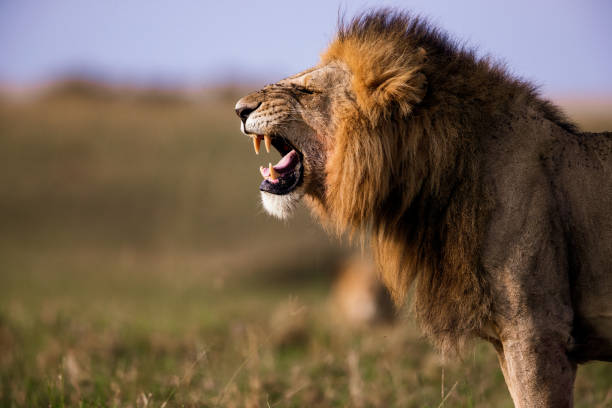Table of Contents
Scientific Classification
- Kingdom: Animalia
- Phylum: Chordata
- Class: Mammalia
- Order: Carnivora
- Family: Felidae
- Genus: Panthera
Species: Panthera leo
Description
The lion (Panthera leo) stands out as one of the most iconic animals on the planet. With its stunning golden mane and impressive strength, this magnificent creature embodies power, royalty, and leadership throughout various cultures and eras. Unlike many other big cats that prefer solitude, lions are social animals that form groups known as prides, setting them apart from their feline relatives.
Male lions are particularly renowned for their striking manes, which can range from a light blond to a deep black. They are also larger than their female counterparts, with males weighing between 150 to 250 kg (330 to 550 lbs), while females typically weigh around 120 to 182 kg(265 to 400 lbs). These powerful animals boast a sturdy build, muscular limbs, strong jaws, and a tail adorned with a tuft of dark fur.
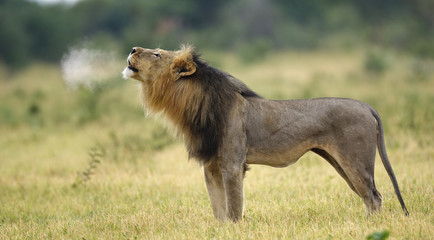
Distribution
Lions used to roam freely across vast areas of Europe, Asia, and Africa, but their numbers have taken a significant hit over the years. Nowadays, you’ll mostly find them in sub-Saharan Africa, with just a small, isolated population hanging on in India.
Modern Range:
Africa: Countries like Kenya, Tanzania, South Africa, Botswana, Namibia, Zambia, Mozambique, and others.
Asia: There’s a lone group of Asiatic lions that resides in Gir Forest National Park in Gujarat, India.
This limited range really highlights the struggles lions face to survive. They’re up against habitat loss, hunting pressures, and conflicts with humans.
Habitat
Lions are quite adaptable creatures, but they mainly call these places home:
- Savannas
- Grasslands
- Woodlands
- Semi-desert regions
They tend to prefer open plains with just a few trees, as this makes hunting a lot easier. Access to water is also crucial when they choose their habitat. African lions really thrive in warm, open areas, while Asiatic lions have a preference for dry deciduous forests and scrub jungles.
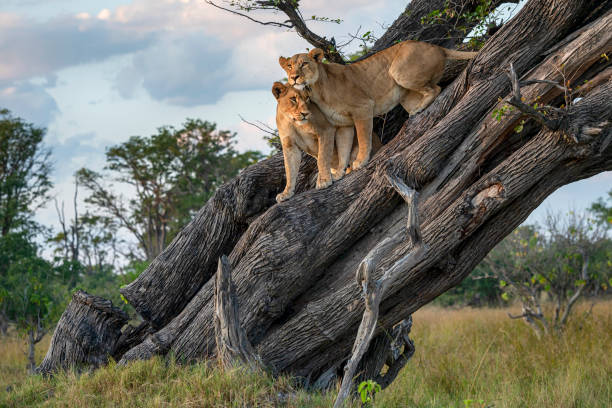
Diet
Lions, being the top predators in their habitat, mainly feast on medium to large herbivores. Their favorite meals include:
- Wildebeest
- Zebras
- Buffalo
- Antelope (like impalas and gazelles)
- Warthogs
- Occasionally, they might go after young elephants, giraffes, or even hippos.
As obligate carnivores, lions rely heavily on meat for their survival. They usually hunt in groups, with the lionesses often taking charge during these hunts. Interestingly, despite their impressive strength, lions have a hunting success rate that hovers around 20–30%.
They also scavenge from other predators, such as hyenas and leopards, and if the opportunity arises, they won’t hesitate to steal a kill.
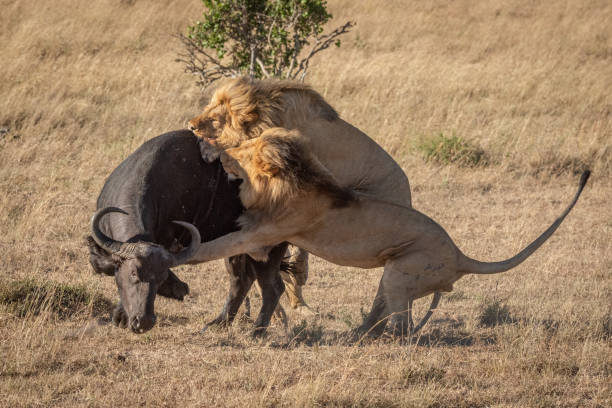
Behavior
Lions display a fascinating array of behaviors that are closely tied to their social structure. Unlike many other big cats, lions are quite social creatures. Their social groups, known as prides, are central to how they interact and behave.
Key Traits:
- Nocturnal Activity: Lions tend to be most active during the night, which helps them stay cool in the warmer temperatures.
- Resting Habits: These majestic animals can sleep or rest for as much as 20 hours a day.
- Grooming and Affection: Lions frequently lick, rub, and groom one another, strengthening their bonds in the process.
- Territorial Nature: Male lions are particularly protective of their territory, fiercely defending it against any intruding males.
Lifespan
In the wild, lions usually have the following lifespans:
- Females: 12 to 15 years
- Males: 8 to 12 years
However, in captivity, where they don’t face natural threats and have a steady food supply, lions can live up to 20 years.
Males tend to have shorter lives, often due to injuries sustained from battles over territory or mates.
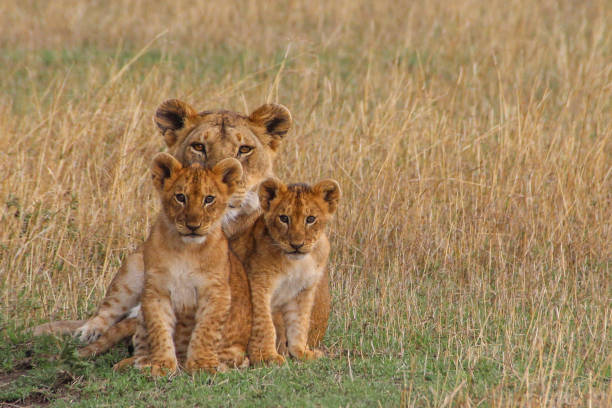
Reproduction and Lifecycle
Lions have the ability to breed throughout the year, but they tend to have their busiest times during the rainy season when food is plentiful.
Mating Behavior:
- A female lion lets potential mates know she’s ready by vocalizing and marking her territory with scent.
- Once they start mating, pairs can copulate every 15 to 30 minutes for several days.
Gestation and Cubs:
- Gestation Period: about 110 days
- Litter Size: typically 1 to 4 cubs
- Weaning: Starts at 10 weeks and wraps up by 6 to 7 months
Cubs are born blind and stay hidden for the first 6 to 8 weeks of their lives.
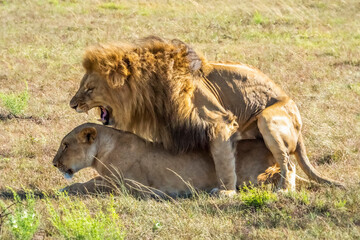
Predators and Threats
While adult lions have few natural predators, their cubs are quite vulnerable. The threats they face include:
- Hyenas
- Leopards
- Other lions, especially rival males
- Crocodiles
But the biggest threat of all comes from humans.
Human-related threats:
- Destruction of their habitat due to agriculture and urban development
- Poaching and the illegal wildlife trade
- Conflicts with pastoralists who are protecting their livestock
Adaptations
Lions have developed a range of fascinating physical and behavioral traits that help them thrive in their environment:
Physical Traits:
- Retractable claws: Perfect for gripping onto their prey.
- Powerful jaws: Capable of crushing bones with ease.
- Muscular limbs: Designed for quick bursts of speed.
- Tawny coloration: Helps them blend into the dry grasslands.
Behavioral Traits:
- Cooperative hunting: Boosts their chances of a successful hunt.
- Roaring: A way to assert dominance and communicate over long distances.
- Social bonding: Fosters unity within the pride.
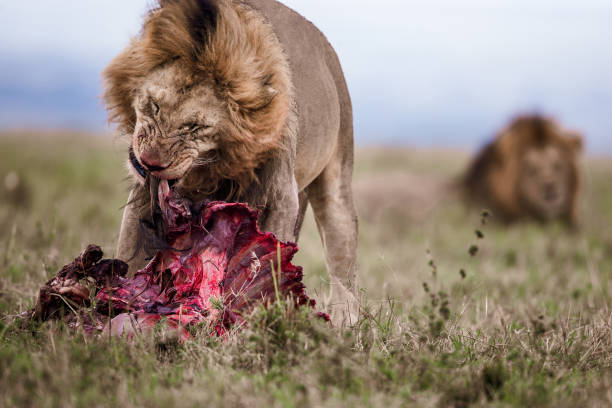
Conservation Status
According to the IUCN Red List, lions are currently classified as:
- Vulnerable
Their populations have plummeted by over 40% in just the last three generations, with estimates indicating that fewer than 20,000 lions are left roaming in the wild.
Key Conservation Measures:
- Protected Areas: Serengeti, Kruger, Okavango Delta
- Anti-poaching laws
- Community-based conservation efforts
- Captive breeding programs
The Asiatic lion is facing an even tougher situation. With only around 600 individuals left in the wild, they are all confined to the Gir Forest.
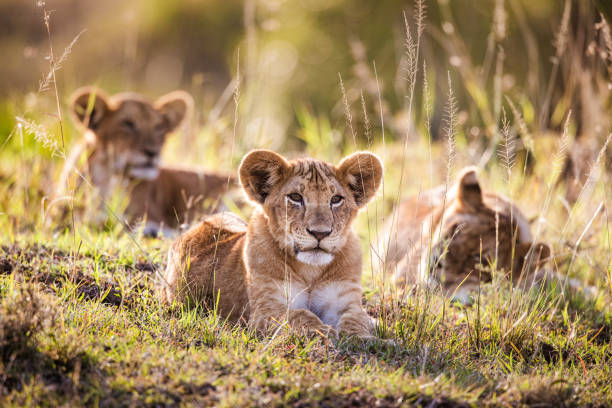
Roar and Communication
A lion’s roar can be heard up to 8 kilometers (5 miles) away. It serves several purposes:
- Declaring territory
- Asserting dominance
- Locating pride members
- Warning off rivals
Other communication methods include:
- Grunts
- Growls
- Moans
- Purring (in cubs and relaxed adults)
- Tail flicks and body posture
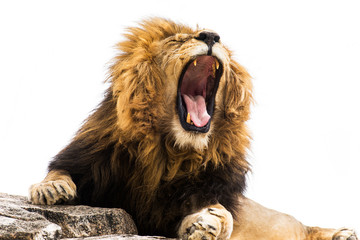
Pride and Social Structure
A pride typically consists of:
- 1 to 3 adult males
- 3 to 10 related females
- Cubs of various ages
Males generally rule a pride for 2–4 years before being ousted by younger rivals. Females, being related, tend to stay in the same pride for life.
Lion society is matriarchal. This means females work together to raise cubs, defend territory, and hunt.
Relationship with Humans
The relationship between humans and lions has always been a fascinating one. Throughout the ages, these majestic creatures have sparked our imagination, finding their way into myths, art, and stories. You can spot them on national flags, family crests, and in various folklore and religious symbols. Statues of lions often guard ancient temples, embodying a sense of nobility in countless tales. Their cultural significance is truly immense.
However, the reality of how lions and humans coexist is becoming more complex. In many regions, lions are viewed as threats to livestock and local livelihoods, which can lead to conflict.
To address this issue, several initiatives are underway to reduce human-lion conflicts, including:
- Compensation programs for farmers who lose livestock
- Lion-proof bomas (enclosures for livestock)
- Educational campaigns to raise awareness about coexistence
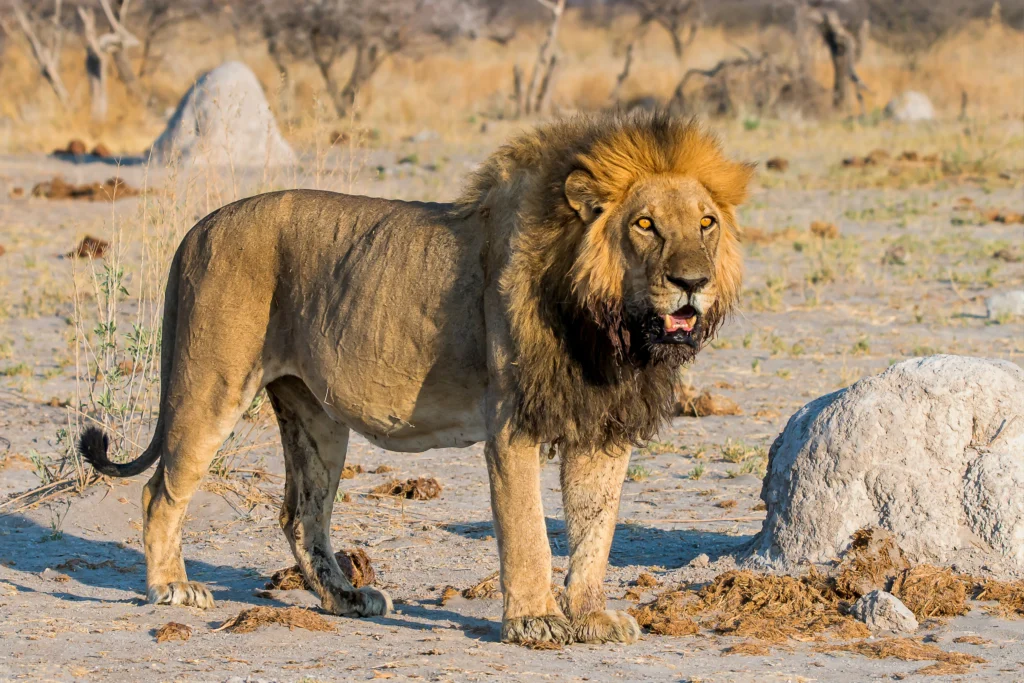
Interesting Facts
- Did you know that a lion’s roar can be louder than a rock concert, hitting around 114 decibels?
- Lions are unique among cats because they’re the only ones with those iconic manes.
- Their tongues are incredibly rough, almost like nature’s own meat scraper, capable of stripping flesh right off the bone.
- When it comes to hunting, female lions take the lead, doing about 90% of the work.
- And when they feast, they can chow down on a staggering 40 kg (88 lbs) of meat in a single sitting!
- Back in ancient Rome, emperors would showcase lions in gladiator arenas for entertainment.
- In various cultures, taking down a lion is seen as a significant rite of passage into manhood.
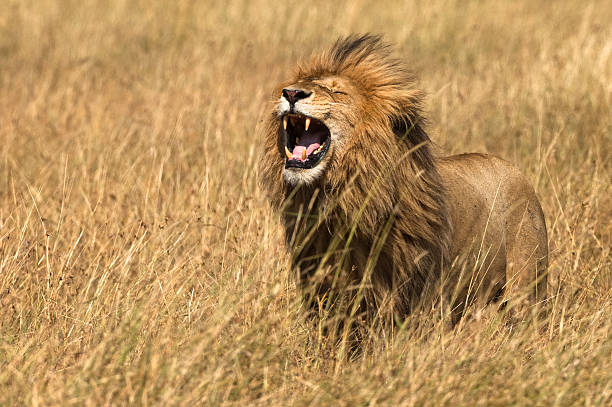
Conclusion
The lion isn’t just a fierce predator; it embodies the raw beauty, strength, and vulnerability of nature. It commands respect and admiration. Its powerful roar echoes across the plains, and its dwindling numbers call for urgent conservation efforts.
By protecting lions, we also safeguard the African savannas and Indian jungles, helping to preserve the rich biodiversity of these ecosystems. We have the power to ensure that the King of Beasts continues to thrive, both in our stories and in the wild. Let’s commit to educating ourselves, collaborating, and embracing sustainable practices.


